The projects of 14 Biosciences Area scientists and engineers received funding through the FY20 Laboratory Directed Research and Development (LDRD) program. The funded projects span a diverse array of topics and approaches including: developing closed-loop plastics from biogenic feedstocks; reimagining a root system optimized for plant-microbe interactions; and creating computational tools for extracting macromolecular conformational dynamics. Lab-wide, 96 projects were selected from a field of 168 proposals. Biosciences Area efforts account for 18.5 percent of the $23 million allocated.
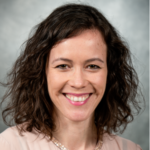 For FY18, the Lab introduced an Early Career Development (ECD) funding track open to candidates no more than five years removed from their PhD. From the Environmental Genomics and SystemsBiology (EGSB) Division, Esther Singer received a continuing award via this track to improve bioenergy yield under drought stress.
For FY18, the Lab introduced an Early Career Development (ECD) funding track open to candidates no more than five years removed from their PhD. From the Environmental Genomics and SystemsBiology (EGSB) Division, Esther Singer received a continuing award via this track to improve bioenergy yield under drought stress.  In addition, from the Molecular Biophysics and Integrated Bioimaging (MBIB) Division, Kanupriya Pande received new funding via the ECD track to develop computational tools for extracting macromolecular conformational dynamics from diffraction and imaging data.
In addition, from the Molecular Biophysics and Integrated Bioimaging (MBIB) Division, Kanupriya Pande received new funding via the ECD track to develop computational tools for extracting macromolecular conformational dynamics from diffraction and imaging data.
Several scientists with primary or secondary affiliation in EGSB were LDRD recipients. Ben Brown was  awarded a continuing LDRD to develop third-wave machine learning for the biosciences, which initially was funded as part of the Machine Learning for Science Lab-wide Initiative, which aimed to surmount the hurdles of next generation computational speed and analytical techniques from programming, statistical, and mathematical methods.
awarded a continuing LDRD to develop third-wave machine learning for the biosciences, which initially was funded as part of the Machine Learning for Science Lab-wide Initiative, which aimed to surmount the hurdles of next generation computational speed and analytical techniques from programming, statistical, and mathematical methods. 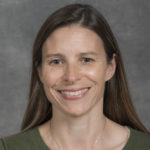 Susannah Tringe will be supporting a different Lab-wide Initiative, Water-Energy Nexus, which is focused on addressing water-energy challenges including advanced water treatment and reuse.
Susannah Tringe will be supporting a different Lab-wide Initiative, Water-Energy Nexus, which is focused on addressing water-energy challenges including advanced water treatment and reuse. 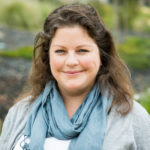 Tringe will continue studying the microbial communities found in water produced as a byproduct along with oil and gas that has been recycled for reuse. Also funded was Jennifer Mortimer‘s Roots 2.0 project which will reimagine a root system optimized for plant-microbe interactions. Yasuo Yoshikuni
Tringe will continue studying the microbial communities found in water produced as a byproduct along with oil and gas that has been recycled for reuse. Also funded was Jennifer Mortimer‘s Roots 2.0 project which will reimagine a root system optimized for plant-microbe interactions. Yasuo Yoshikuni 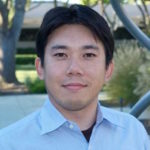 received new funding to developing a biological 3D fabrication platform for synthesis of complex Genome-Encoded COmposites (GECO) via the Lab-wide Initiative track.
received new funding to developing a biological 3D fabrication platform for synthesis of complex Genome-Encoded COmposites (GECO) via the Lab-wide Initiative track.
 From the Biological Systems and Engineering (BSE) Division, Antoine Snijders and Eric Sundstrom received continuing funding for their projects. Snijders will evaluate the radiobiological effects of laser-accelerated ion beams.
From the Biological Systems and Engineering (BSE) Division, Antoine Snijders and Eric Sundstrom received continuing funding for their projects. Snijders will evaluate the radiobiological effects of laser-accelerated ion beams. 
 Sundstrom will develop new hosts to enable effective electrons-to-biomass conversion. Jay Keasling and Steven Singer each received funding for new projects. Keasling is engineering biosynthetic pathways by combining natural pathways with artificial metalloenzymes and,
Sundstrom will develop new hosts to enable effective electrons-to-biomass conversion. Jay Keasling and Steven Singer each received funding for new projects. Keasling is engineering biosynthetic pathways by combining natural pathways with artificial metalloenzymes and,  in a separate project, developing closed-loop plastics from biogenic feedstocks. Singer is working on electron economical CO2 bioconversion.
in a separate project, developing closed-loop plastics from biogenic feedstocks. Singer is working on electron economical CO2 bioconversion.
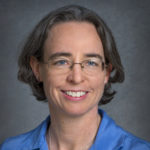 Four scientists in the MBIB Division were given LDRDs. Corie Ralston and Nicholas Sauter received funding for continuing projects. Ralston’s engineering of advanced biogenics for the detection, binding, and control of metal in the environment was initially funded under the Advanced Biogenic Chemicals and Materials Lab-wide Initiative, which sought to complement current methods of producing chemicals and materials with processes that reduce their
Four scientists in the MBIB Division were given LDRDs. Corie Ralston and Nicholas Sauter received funding for continuing projects. Ralston’s engineering of advanced biogenics for the detection, binding, and control of metal in the environment was initially funded under the Advanced Biogenic Chemicals and Materials Lab-wide Initiative, which sought to complement current methods of producing chemicals and materials with processes that reduce their 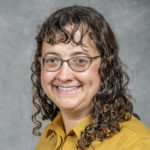
 dependence on petroleum inputs and environmentally harmful chemistry. Initial funding for Sauter’s work on interactive machine learning for tomogram segmentation and annotation fell under the Machine Learning for Science Lab-wide Initiative. In addition, Karen Davies’s project integrating metagenomics and electron cryotomography (cryo-ET) to characterize biological “dark matter” communities was awarded continuing funding.
dependence on petroleum inputs and environmentally harmful chemistry. Initial funding for Sauter’s work on interactive machine learning for tomogram segmentation and annotation fell under the Machine Learning for Science Lab-wide Initiative. In addition, Karen Davies’s project integrating metagenomics and electron cryotomography (cryo-ET) to characterize biological “dark matter” communities was awarded continuing funding.  And Na Ji received funding for her ongoing research to develop high-resolution optical microscopy methods for imaging plants and microbes.
And Na Ji received funding for her ongoing research to develop high-resolution optical microscopy methods for imaging plants and microbes.



